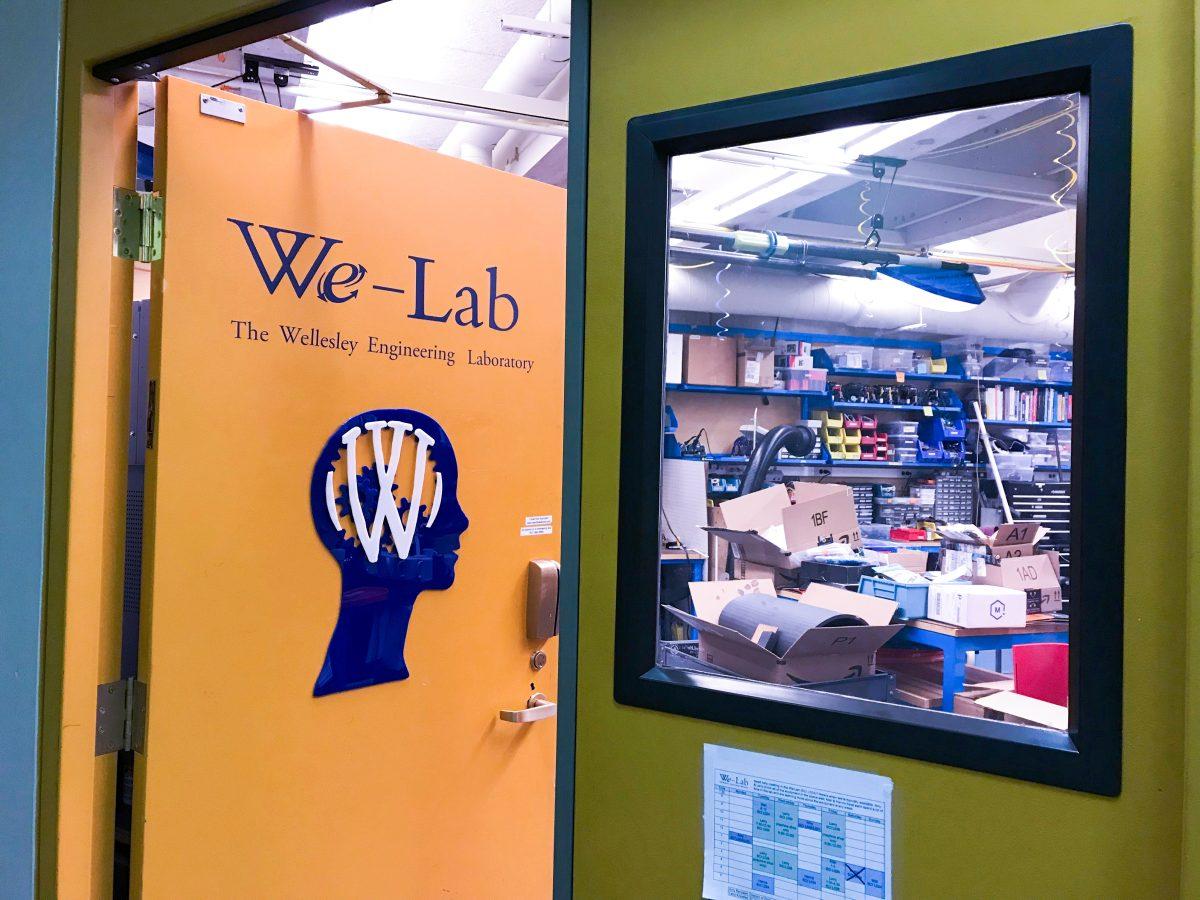Imagine taking a course that examines engineering through the lens of social justice and conflict. Or picture traveling to Nicaragua to work on engineering fieldwork projects, such as solar panel assembly and installation. These are just a few examples of engineering opportunities available to Wellesley students throughout their undergraduate education at a liberal arts institution.
Although Wellesley does not offer a major or minor in engineering, there are several engineering courses available to students who wish to study this field. Topics covered in these classes range from building students’ technical and mechanical skills to investigating the technical challenges that underserved populations face.
According to Director of Engineering Studies Amy Banzaert, there are two main reasons why Wellesley students take engineering classes.
“Some are hoping to expand their liberal arts education to include engineering, recognizing both that learning engineering habits of mind can inform their own disciplines and that technology plays a significant role in many seemingly unrelated disciplines,” she said. “Others are planning to take engineering classes at MIT or Olin and recognize that an initial class at Wellesley can help prepare them to study at those institutions.”
According to Banzaert, engineering courses at Wellesley are similar to those offered at technology institutes, since both incorporate a hands-on, project-based approach to teaching engineering. However, the approaches differ in catering to the institutions’ respective student populations.
“My classes are targeted to two populations: students who might only take one engineering class to broaden their liberal arts education, who are very unlikely to be in classes at technology institutes; and students who are interested in studying further at Olin or MIT, who are more similar to students at technology institutes,” said Banzaert. “Therefore, my classes have been designed to appeal to both of these groups and have some features, such as the breadth of material covered and very few prerequisites, that [are] different from classes at technology institutes.”
Banzaert also added that the classes she teaches at Wellesley often take on an interdisciplinary approach, as shown through the course ENGR 305/PEAC 305 titled “Intersections of Technology, Social Justice, and Conflict,” where students can apply concepts about social justice to technology and engineering.
Sarah Barden ’18, who is currently taking this seminar, explained one of the unique factors about taking engineering courses at Wellesley.
“At Wellesley, engineering classes have students from many different majors, whereas all students study engineering at Olin,” she said. “In my ENGR/PEAC seminar this semester, there are about two-thirds Peace and Justice Studies students and one-third STEM students. Taking such an interdisciplinary course challenges my thinking and invites me to see engineering in ways I never had before.”
In addition to taking engineering courses at Wellesley, students have the option to take classes through cross-registration at MIT or Olin College of Engineering. At these institutions, students can also participate in engineering research opportunities or join organizations such as the Society of Women Engineers, the Society of Hispanic Professional Engineers or the National Society of Black Engineers at MIT and Boston University.
Wellesley students interested in studying engineering more in-depth can receive a certificate from Olin, which is comparable to a minor in terms of the required coursework. Wellesley also offers a double-degree program with MIT or Olin where the student can receive a Bachelor of Arts degree from Wellesley and a Bachelor of Sciences in engineering from the other school. However, Banzaert explained that this option is often challenging for students logistically and admission to both schools is competitive.
Beyond academics, students can also participate in the Wellesley Engineering Society (WES), which allows individuals to attend workshops, events and lectures related to this field.
Barden, who is also the president of WES, explained the main goals of the organization.
“The Wellesley Engineering Society is an organization for students interested in pursuing engineering academically and socially. We intend to better communicate information about engineering opportunities to students and build relationships between students interested in engineering,” she said. “WES allows students to explore engineering, learn new skills and have fun through events like workshops, seminars and social events.”
Examples of events that WES has organized include a movie night to watch “Rogue One: A Star Wars Story,” a Lego workshop, cross-registration information sessions and more recently, a collaboration with Robogals to turn everyday objects into keys for a laptop.
“I think [WES] plays an important role in this community where not many people have thought about taking classes in engineering,” said Keer Sun ’20, a member of WES. “Hopefully, we can help people find their passion.”
Banzaert acknowledged that pursuing engineering at a liberal arts college differs greatly from doing so at technology institutes. She explained that some liberal arts colleges, such as Swarthmore College or Smith College, offer majors in engineering, and their courses adopt an interdisciplinary approach to this subject. At other liberal arts colleges, engineering opportunities and coursework can be limited, and students interested in engineering must pursue it in their graduate studies.
Banzaert explained that her position is important because it offers support to students who are interested in engineering and want to pursue it at a liberal arts college.
“At Wellesley, given the proximity of Olin and MIT, as well as some other critical factors, creating an engineering major is not the approach we’ve taken. However, my position was created so that our students can take engineering courses directly at the college and can be advised by a faculty member with engineering experience in both academia and the corporate world,” she said.






